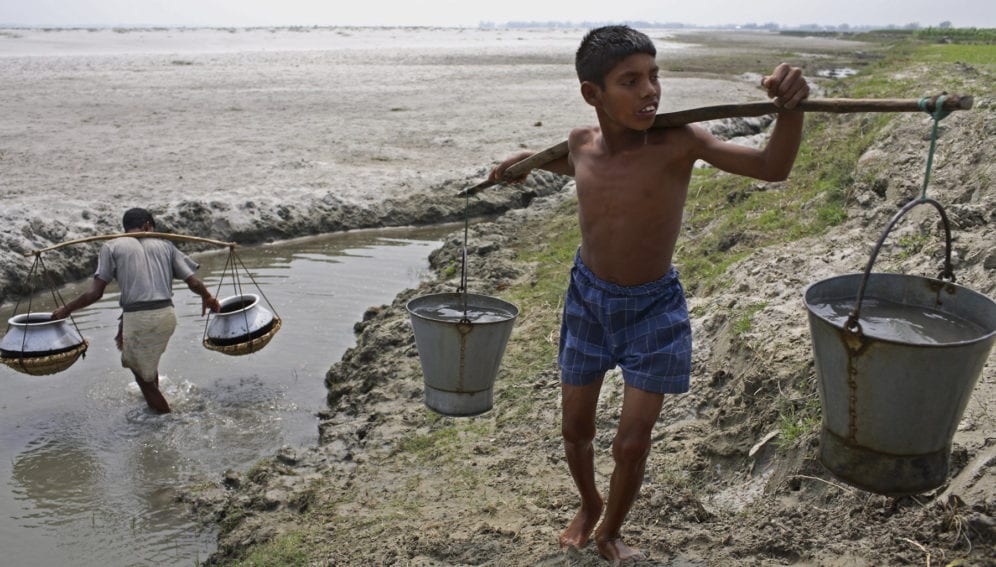By: Naimul Haq
Send to a friend
The details you provide on this page will not be used to send unsolicited email, and will not be sold to a 3rd party. See privacy policy.
[DHAKA] A recent study in Bangladesh links exposure to arsenic-contaminated drinking water during pregnancy to poor cognitive ability that increases the chance of death by drowning in children aged 1—5 years.
The study, published October in Global Health Action, was conducted by the Bangladesh Rural Advancement Committee (BRAC), Dhaka, McMaster University, Hamilton, Ontario, Canada and the International Centre for Diarrhoeal Disease Research, Bangladesh (iccdr,b), Dhaka.
Drowning accounts for 42 per cent of all deaths in Bangladeshi children aged 1—4 years. These deaths occur mostly in the rural areas of the deltaic country, with 75 per cent of them in natural water bodies less than 20 metres from the home.
Mahfuzar Rahman, lead author of the study and programme head of the research and evaluation division of BRAC, tells SciDev.Net that arsenic contamination might “impair intrauterine programming and foetal neurodevelopment which ultimately raises the risk of drowning among children.”
Rahman says: “In our five-year research it was found that 73 per cent of drowning deaths occurred among children of women who were exposed to arsenic during their pregnancy.” The study focused on the Matlab sub-district, about 55 kilometres from Dhaka, which is known to be highly arsenic-contaminated and where there is demographic surveillance data gathered by the iccdr,b.
“We analysed mortality data for children who were born to 11,414 pregnant women between 2002 and 2004, with an average age of five years of follow-up. There were 84 drowning deaths registered, with cause of death ascertained using verbal autopsy done by interviewing close relatives.
Mohammad Yunus, co-author of the study and consultant senior scientist at icddr,b, tells SciDev.Net that it has been demonstrated in animal models that “arsenic exposure can modify monoamine content that can subsequently affect behaviour and other brain activities including movement control, learning and memory, cognition and emotion.”
“Although our finding in this study about the correlation between prenatal exposure to arsenic and the risk of drowning could be an incidental observation, we hypothesise that change in behaviour of children due to altered brain development in foetal life because of arsenic exposure might have some causal linkage,” Yunus says.
Shams Arefeen, a senior researcher at icddr,b who was not involved in the study, tells SciDev.Net that while he agrees with the findings of the study he is concerned that it is based only on observations. “I believe there is scope for alternative explanations as hypothesis-based findings are not enough. I would suggest an epidemiological study on this as there are other factors which we cannot simply rule out.”
These factors include inadequate supervision of children, unprotected water bodies and lack of experience in handling children by young mothers.
Arsenic in groundwater exposes about 35—40 million people mostly in south-western rural Bangladesh where tube wells are a source of drinking water. Tube wells draw water from underground layers are often contaminated beyond the safe (WHO) limit for arsenic of 10 micrograms per litre.














